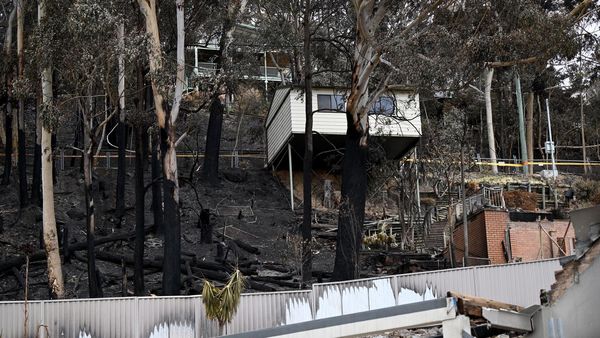
Despite decades of progressive policies and enhanced safety-net programs, income inequality in California — the gap between the highest and lowest earners — remains among the most extreme in the country.
A new study makes clear that this extreme income gap has generally been widening for years. And what’s equally clear, and backed by the numbers, is that California’s leaders must target education and job training if they’re serious about lifting families out of the grinding cycle of low-income living.
“Safety-net programs definitely help, and they’re important. But they are intended to keep people from slipping even further behind,” said Daniel Payares-Montoya, a research associate with the nonpartisan Public Policy Institute of California, or PPIC. “If you want to have sustained gains, you have to focus on providing adequate job skills to meet the emerging labor market.”
That means more aggressive outreach to keep young people in school; track them toward community colleges, four-year universities and trade schools; and generally emphasize the need for the sort of technological skills that can lead to better paying, more secure work.
“It’s not just about the safety net,” Payares-Montoya said. “It’s about education and training.”
Using the latest data available, PPIC researchers found that families at the 10th percentile earn roughly $29,000 in 2022 dollars. That is far below the more than $100,000 that a California family with one working adult and two children needs to earn to meet basic living expenses, according to MIT’s Living Wage Calculator. California families in the 90th percentile earn roughly $305,000.
That income gulf has been at least 40 years in the making. In 1980, those at the top made seven times more than those at the lower reaches, climbing to today’s 10-to-1 multiple for the highest to lowest incomes.
California’s income inequality is among the worst in the nation. The PPIC found only six states, plus the District of Columbia, had wider income gaps. A 2022 study of U.S. Census Bureau data placed California among the five states with the greatest income inequality.
Just before the arrival of COVID-19, lower-income earners had a few years of wage gains that narrowed the income gap a bit, Payares-Montoya said. But those gains halted when the pandemic shutdown shuttered much of California’s job market.
At the same time, those on the upper rungs of the income ladder realized huge capital gains, mostly from soaring stock prices. The California Budget & Policy Center reported last year that the share of income going to the state’s richest 1% of earners grew explosively during and just after the pandemic. In 2021, the 1% held almost one-third of all California income that was reported for tax purposes, its study found.
With the job market bouncing back post-pandemic, earnings for lower-income workers are beginning to rise again after two years of steep declines, according to the PPIC’s report. But the wealth gap is too vast to be closed by slightly boosting wages at the lowest end of the spectrum.
California’s various safety-net programs aren’t designed to address a problem this complex. Rather, funding food assistance programs like CalFresh and expanding Medi-Cal to include more people regardless of their immigration status are ways to prevent the very worst from happening. They’re critically important, but they are lifelines.
It’s education and skill development that ultimately make the difference. Since 1980, the PPIC found, California families in which any member of the household held a four-year degree have experienced a 33% increase in median income. For families without any college graduates, median income has decreased by 8% in that time.
The raw dollar view is just as stark. A family that includes even one college graduate earns more than twice the income than a family without any such graduate — $2.21 to $1.
In that balance lies the difference between barely surviving and actually having a chance to thrive. As the PPIC reported last year, nearly one-third of all Californians are living in or near poverty. According to the federal Census Bureau’s supplemental poverty measure, California in 2022 had the highest poverty rate in the nation.
About three in five California students enroll in college within a year of graduating high school, a figure that has been dropping steadily since hitting a peak of 67% in 2017-2018. One level down, K-12 public school enrollment has experienced sharp declines since the pandemic, and with state funding tied to attendance, one result is less money flowing to those school districts in decline.
It adds up to a worrisome trend, because every household that forgoes education becomes a household less likely to succeed in California. That has practical implications for the state itself, too: Over the past 20 years, California’s top 1% have routinely provided more than 40% of the state’s personal income tax payments. If the richest have a rough year, the whole state feels the pain.
Building a more solid system will depend significantly on wages rising steadily for lower-income workers and families. The path there is education and job-skill training.
“Policymakers should realize that this is an issue that worries Californians. Our research has shown that,” Payares-Montoya said. “We need to help workers gain the skills they need if the state is going to close this gap.”







